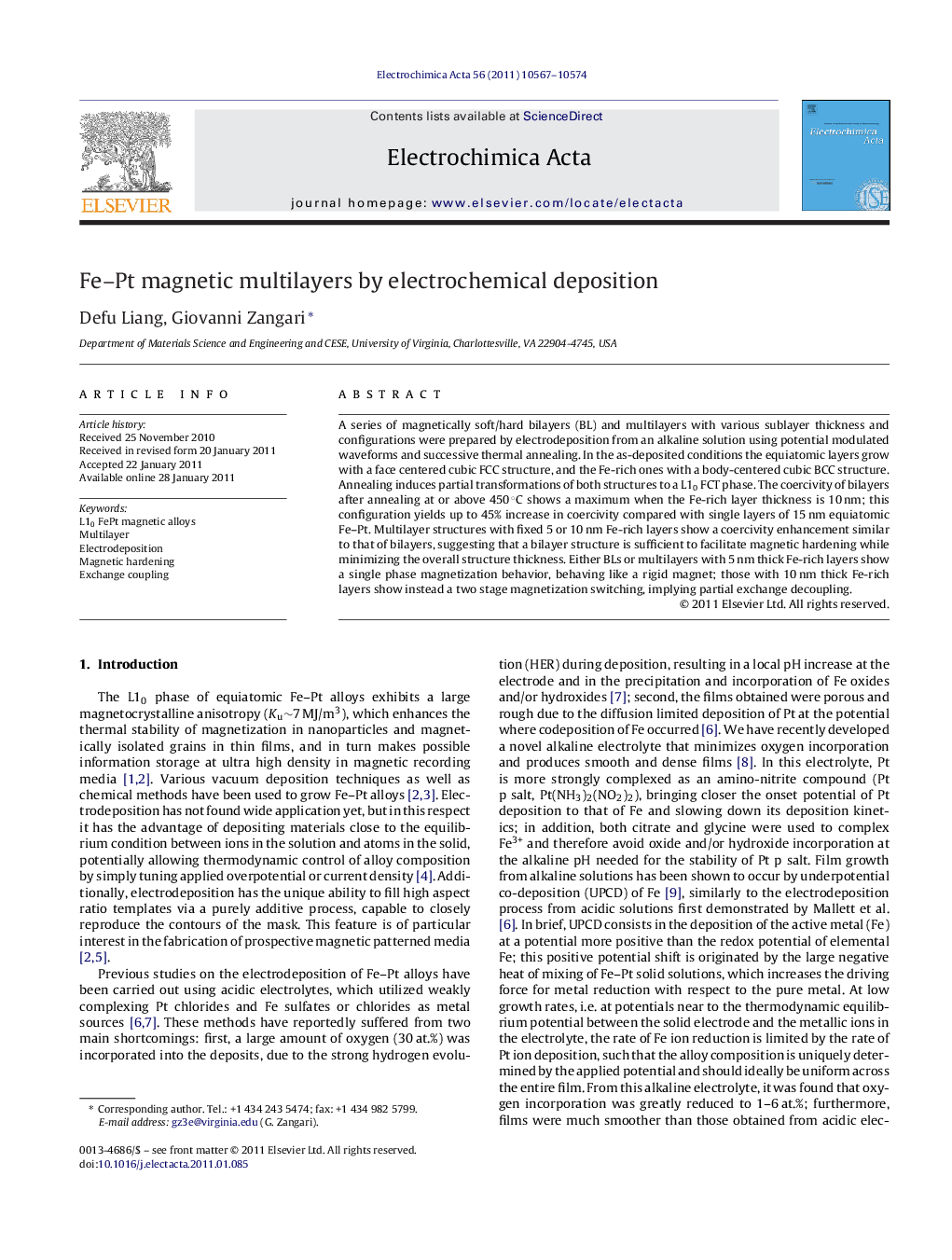| Article ID | Journal | Published Year | Pages | File Type |
|---|---|---|---|---|
| 190114 | Electrochimica Acta | 2011 | 8 Pages |
A series of magnetically soft/hard bilayers (BL) and multilayers with various sublayer thickness and configurations were prepared by electrodeposition from an alkaline solution using potential modulated waveforms and successive thermal annealing. In the as-deposited conditions the equiatomic layers grow with a face centered cubic FCC structure, and the Fe-rich ones with a body-centered cubic BCC structure. Annealing induces partial transformations of both structures to a L10 FCT phase. The coercivity of bilayers after annealing at or above 450 °C shows a maximum when the Fe-rich layer thickness is 10 nm; this configuration yields up to 45% increase in coercivity compared with single layers of 15 nm equiatomic Fe–Pt. Multilayer structures with fixed 5 or 10 nm Fe-rich layers show a coercivity enhancement similar to that of bilayers, suggesting that a bilayer structure is sufficient to facilitate magnetic hardening while minimizing the overall structure thickness. Either BLs or multilayers with 5 nm thick Fe-rich layers show a single phase magnetization behavior, behaving like a rigid magnet; those with 10 nm thick Fe-rich layers show instead a two stage magnetization switching, implying partial exchange decoupling.
